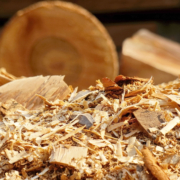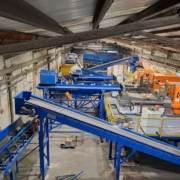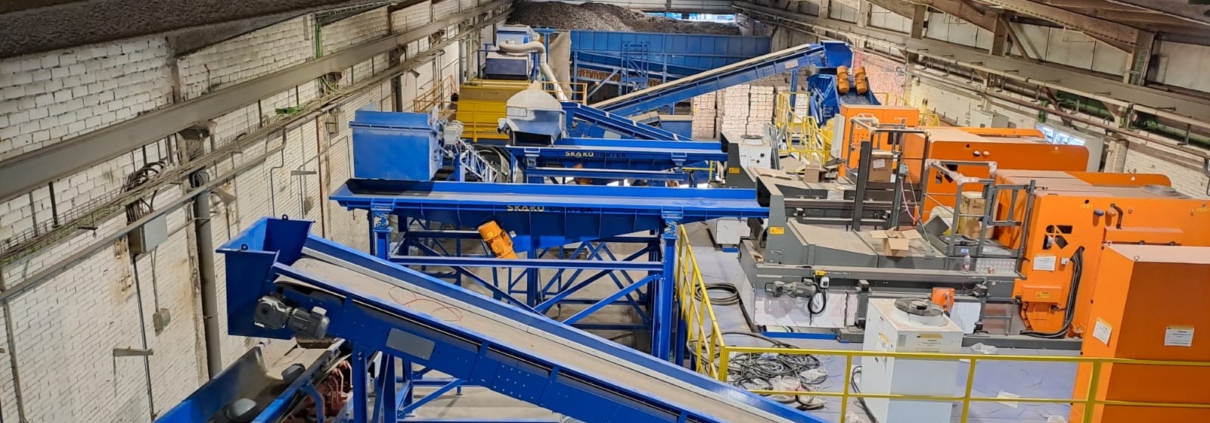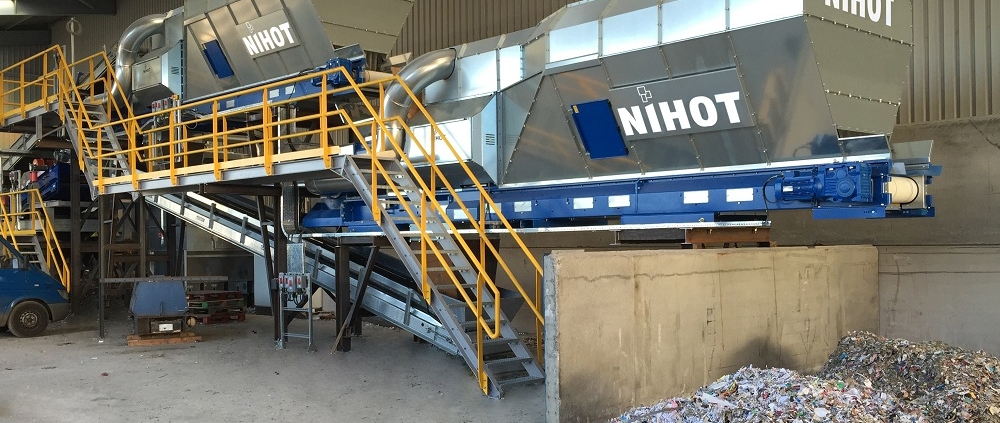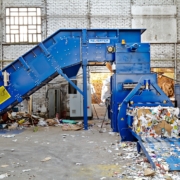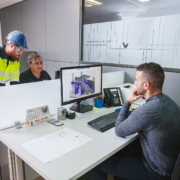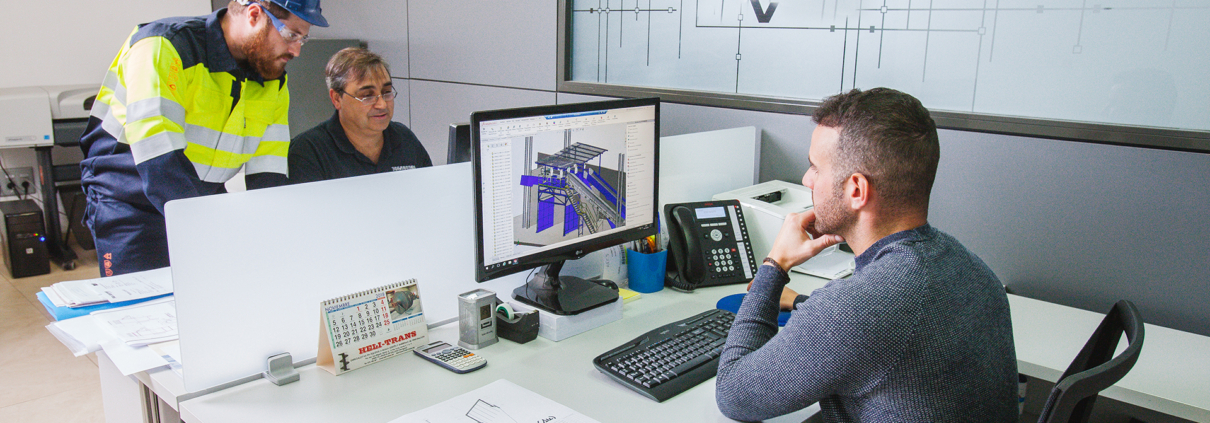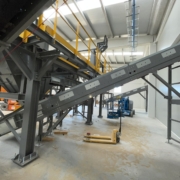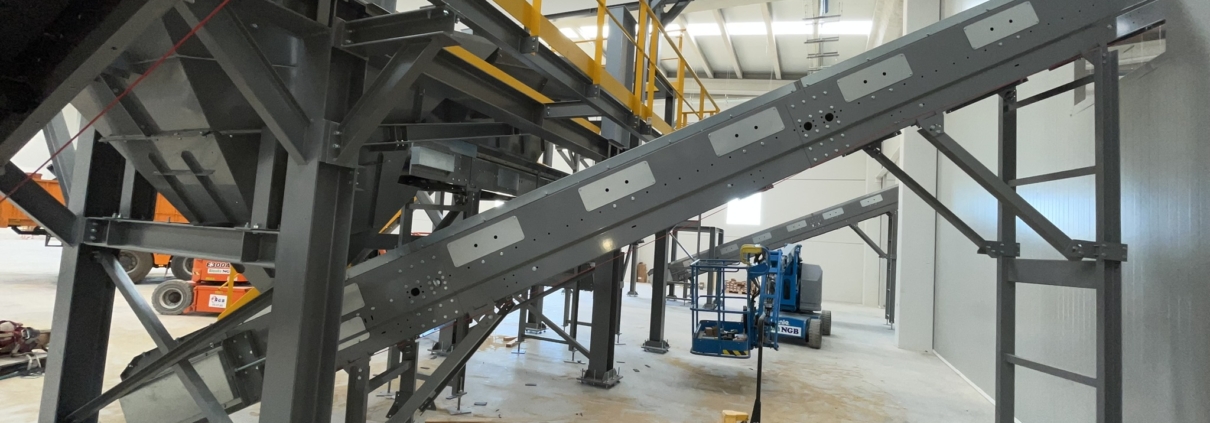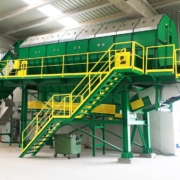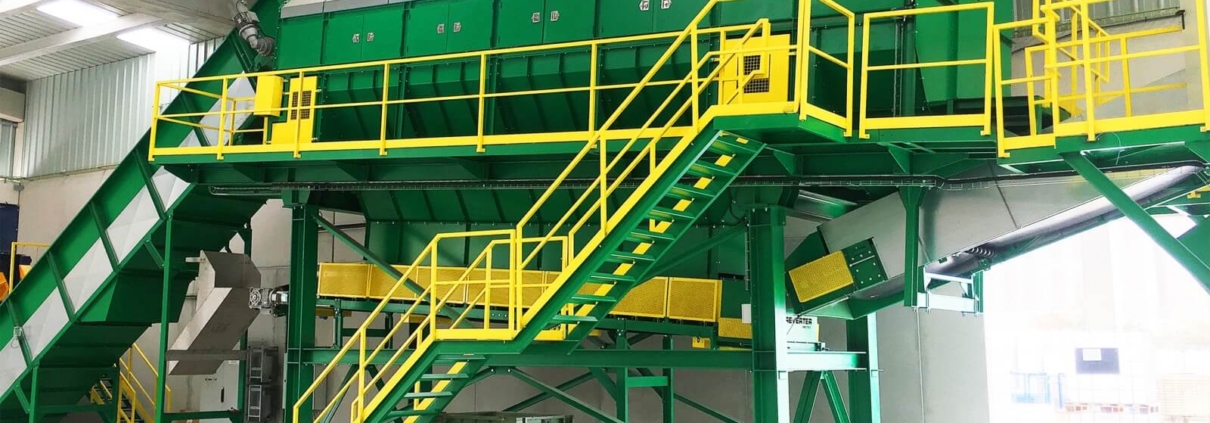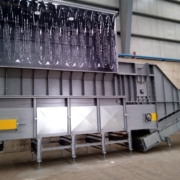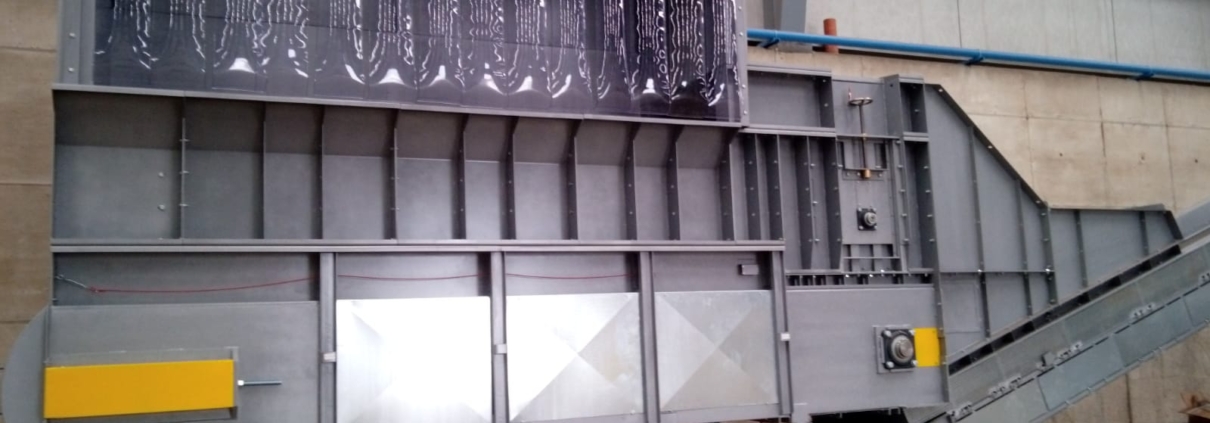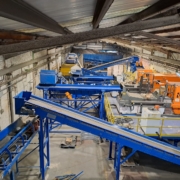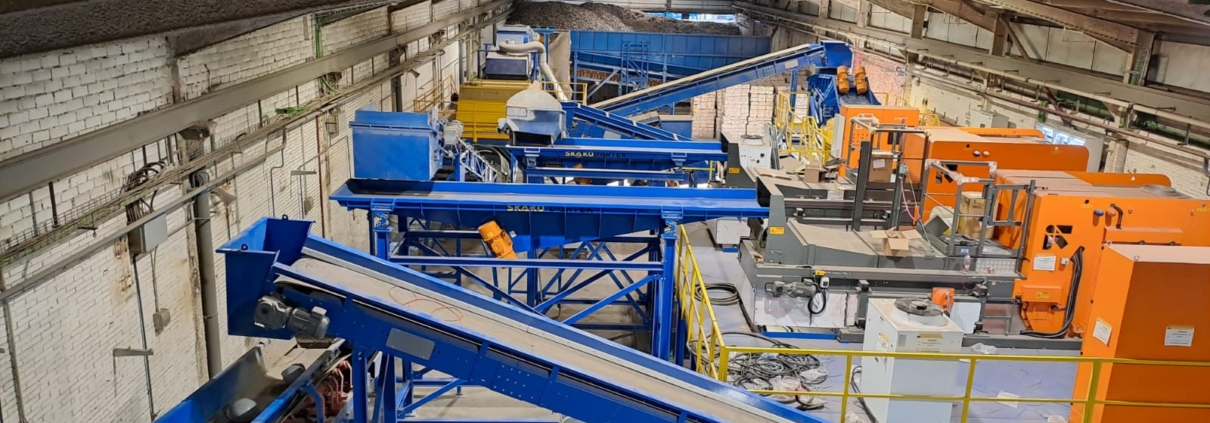Les cintes transportadores són eines essencials en la gestió de residus dins de la indústria del reciclatge. Permeten el transport, la classificació i la separació de diferents tipus de materials de forma eficient. El seu disseny i tecnologia han evolucionat per adaptar-se a les necessitats específiques del reciclatge, contribuint a processos més sostenibles. Aquest article aborda els tipus de cintes i les seves aplicacions en el sector.
Evolució i Funcionalitat de les Cintes Transportadores
Les cintes transportadores han experimentat un notable desenvolupament al llarg dels anys. La seva evolució ha estat marcada per avenços tecnològics significatius que han permès optimitzar la seva funcionalitat en diverses indústries, inclosa la del reciclatge.
Història i Avenços Tecnològics
La història de les cintes transportadores es remunta a finals del segle XIX. Inicialment, es van utilitzar en mines i fàbriques, on facilitaven el trasllat de materials pesants d’un lloc a un altre. Des d’aquells primers dissenys rudimentaris, la tecnologia ha avançat considerablement.
Algunes fites importants en la seva evolució inclouen:
- La introducció de materials més resistents, com el cautxú i el PVC, que milloren la durabilitat.
- El desenvolupament de sistemes motoritzats que permeten un transport més eficient i continu.
- La implementació de sensors i tecnologia d’ automatització que optimitzen el flux de treball.
Aquests avenços han contribuït al altri que les cintes siguin més versàtils, adaptant-se a diferents entorns i tipus de materials, incloent-hi els residus generats en el procés de reciclatge.
Importància en el Reciclatge
Les cintes transportadores juguen un paper essencial en la indústria del reciclatge. La seva funcionalitat va més enllà del simple transport de materials; permeten classificar i separar residus de manera eficaç i ràpida. La importància d’ aquestes cintes en el reciclatge es reflecteix en diversos aspectes.
- Eficiència en el Processament: Faciliten la transferència contínua de materials, reduint temps d’ espera i augmentant la productivitat en les plantes de reciclatge.
- Classificació Efectiva: Les cintes transportadores estan dissenyades per portar els materials fins a àrees de treball on es poden classificar i dividir fàcilment, millorant la qualitat del material reciclable.
- Tecnologia Avançada: Integrar tecnologies com la separació magnètica o per visió en cintes transportadores permet optimitzar encara més la classificació i recuperació de materials valuosos, la qual cosa és crucial per a la rendibilitat del procés de reciclatge.
- Adaptabilitat: Es poden personalitzar segons les necessitats de cada empresa, permetent adaptacions en el seu disseny per gestionar diferents tipus de residus.
La combinació d’ aquests factors reforça la funcionalitat de les cintes transportadores, posicionant-les com un component vital en el flux operatiu del reciclatge modern. Aquest enfocament cap a l’ eficiència i la innovació és clau per fer front als desafiaments de la gestió de residus en l’ actualitat.
Tipus de Cintes Transportadores
Les cintes transportadores són eines essencials en diversos sectors industrials, especialment en el reciclatge. El seu disseny varia segons el tipus de material que transporten i la funció que exerceixen en el procés. A continuació, es descriuen els principals tipus de cintes transportadores i les seves característiques.
Cintes Transportadores de Banda
Les cintes transportadores de banda són les més comunes al mercat. Estan constituïdes per un material flexible que es desplaça sobre politges. Aquestes cintes són fàcils d’ adaptar a diferents configuracions i permeten el transport continu de materials.
Materials Utilitzats
Generalment, es fabriquen amb materials com goma, PVC o poliuretà. L’ elecció del material depèn del tipus de residus que es manipulen i les condicions de l’ entorn, com la resistència a l’ entransió i la corrosió.
Aplicacions Comunes
Són ideals per al transport de productes a granel, com residus plàstics i paper. En el sector del reciclatge, faciliten la recol·lecció i el trasllat eficient de materials cap a les estacions de classificació.
Cintes Transportadores Modulars
Aquest tipus de cintes està compost per seccions interconnectades que permeten una gran flexibilitat en el seu disseny. Són una opció popular en situacions que requereixen un manteniment fàcil i una neteja ràpida.
Avantatges dels Sistemes Modulars
Les cintes modulars faciliten l’ accés a les zones on es realitza la classificació i, en estar compostes de mòduls, és senzill reemplaçar seccions danyades sense afectar el sistema complet.
Usos a la Indústria
S’ utilitzen en la classificació de residus, així com en la indústria alimentària i farmacèutica, on la higiene és primordial. El seu disseny modular les fa perfectes per a entorns on es manipulen diversos tipus de materials.
Cintes Transportadores de Rodets
Aquest tipus de cintes utilitza rodets per facilitar el moviment dels materials. Poden funcionar de forma motoritzada o per gravetat, depenent del disseny de la planta.
Eficiència en Emmagatzematge
Les cintes de rodets són especialment útils en situacions on es manegen productes empaquetats, ja que permeten una fluïdesa en l’ emmagatzematge i distribució de productes.
Processos de Distribució
S’ utilitzen comunament en centres de distribució i logística, on el maneig de caixes i paquets és constant. El seu disseny permet un flux continu i organitzat de materials.
Aplicacions a la Indústria del Reciclatge
Les cintes transportadores són fonamentals a optimitzar la gestió de residus en el reciclatge. La seva capacitat per manipular materials de manera eficient es tradueix en aplicacions específiques que faciliten processos crucials en aquest sector.
Classificació de Residus
La classificació de residus és una etapa crítica en el procés de reciclatge, ja que determina quins materials es poden recuperar i com s’ ha de gestionar la resta. Una correcta segregació permet maximitzar l’ eficàcia del reciclatge i reduir la quantitat de residus que acaben en abocadors.
Importància de la Classificació
Realitzar una adequada classificació de residus ajuda a garantir que els materials reciclables siguin processats correctament. Això no només millora la recuperació de recursos, sinó que també minimitza l’impacte ambiental en reduir la quantitat de deixalles.
Tecnologies Utilitzades
- Sistemes de cintes transportadores modulars que permeten un accés fàcil i ràpid per a la classificació manual.
- Equips automatitzats que integren la tecnologia de separació per visió per identificar i classificar ràpidament els materials.
Separació Magnètica
La separació magnètica és un procés essencial en la recuperació de metalls ferrosos dins del reciclatge. Les cintes transportadores magnètiques permeten una separació eficaç i ràpida d’ aquests materials, garantint la seva reutilització en nous processos de fabricació.
Procés de Separació de Metalls
Les cintes magnètiques empren imants que són capaces d’atraure i separar materials metàl·lics en passar-hi. Aquest mètode és fonamental en instal·lacions de reciclatge de ferralla on es processen grans volums de materials.
Influència en el Rendiment Operatiu
En integrar cintes magnètiques en les línies de producció, les plantes de reciclatge poden augmentar l’ eficiència en la recuperació de metalls, la qual cosa es tradueix en majors beneficis econòmics i una millor sostenibilitat del procés productor.
Maneig de Residus Orgànics
Les cintes transportadores també exerceixen un paper vital en el maneig de residus orgànics, facilitant el seu trasllat cap a les instal·lacions de compostatge o digestió anaeròbica.
Transport i Processament
Aquestes cintes transporten residus orgànics des dels punts de recol·lecció fins a les màquines de processament, garantint una manipulació adequada que minimitza la pèrdua de matèria orgànica i optimitza la producció de compost o biogàs.
Avantatges per a la Salut
L’ús de cintes transportadores per manejar residus orgànics també ofereix beneficis per a la salut dels treballadors. En reduir el contacte manual i la manipulació directa de deixalles, es mitiguen riscos relacionats amb la higiene i l’ exposició a contaminants.
Avantatges de les Cintes Transportadores al Reciclatge
Les cintes transportadores ofereixen múltiples beneficis en l’àmbit del reciclatge, optimitzant els processos i millorant l’eficiència operativa en la gestió de residus. A continuació, es detallen els principals avantatges del seu ús.
Augment de l’ Eficiència
L’ús de cintes transportadores en instal·lacions de reciclatge permet un maneig continu de materials, la qual cosa es tradueix en un augment significatiu en l’eficiència. Aquestes cintes garanteixen que els residus es transportin de manera ràpida i efectiva des del punt de recol·lecció fins a les àrees de classificació i processament.
Amb un flux constant de materials, es minimitzen els temps d’ inactivitat i s’ optimitza el rendiment general de la planta. L’ automatització que proporcionen permet que els operadors es concentrin en tasques més crítiques, com la supervisió i el calibratge d’ equips per a una major eficàcia.
Reducció de Costos
La implementació de cintes transportadores també comporta una notable reducció de costos operatius. En automatitzar el moviment de materials, es redueix la dependència de mà d’ obra manual, disminuint així les despeses relacionades amb salaris i formació de personal. Això resulta especialment rellevant en operacions de gran envergadura on el volum de residus tractats és elevat.
Menors costos operatius milloren la rendibilitat de les instal·lacions de reciclatge, permetent que les empreses reinverteixin en tecnologies addicionals o en la millora de serveis.
Millores a la Seguretat Laboral
Les cintes transportadores contribueixen a un entorn laboral més segur, reduint la càrrega física sobre els treballadors. En disminuir la necessitat de moure manualment materials pesants, es disminueix també el risc de lesions relacionades amb l’ esforç físic, com esquinços o problemes d’ esquena. L’ ús de sistemes automatitzats de transport permet que el personal estigui menys exposat a condicions laborals perilloses.
A més, en estar dissenyades amb característiques de seguretat, com baranes i parades d’ emergència, es proporciona una capa addicional de protecció per als operaris.
Flexibilitat i Adaptabilitat
Les cintes transportadores són altament flexibles i poden adaptar-se a diversos dissenys de planta i a diversos tipus de residus. Aquesta versatilitat permet a les empreses de reciclatge realitzar ajustaments en les seves línies de producció segons sigui necessari, maximitzant l’ espai i facilitant la reconfiguració en funció de noves necessitats operatives o canvis en els fluxos de treball.
La capacitat d’ adaptar el sistema a diferents materials i tipus de reciclatge proporciona un avantatge competitiu en un sector en constant evolució.
Consideracions per Seleccionar una Cinta Transportadora
L’ elecció d’ una cinta transportadora adequada és fonamental per optimitzar els processos en la indústria del reciclatge. Una selecció acurada pot millorar l’ eficàcia operativa i prolongar la vida útil de l’ equip.
Aspectes Clau a Avaluar
A l’hora de triar una cinta transportadora, és crucial considerar diversos factors. Aquests aspectes influeixen directament en el rendiment i l’ adaptació del sistema a les necessitats específiques de la planta de reciclatge. Alguns d’ aquests aspectes són:
- Capacitat de Càrrega: És essencial determinar la quantitat i el tipus de material que es transportarà per assegurar que la cinta suporti la càrrega sense comprometre el seu funcionament.
- Longitud i Dimensions: Les dimensions de l’ espai disponible i la longitud necessària per al transport de residus han de ser considerades per evitar problemes durant la instal.lació.
- Tipus de Material: Els materials de construcció de la cinta són essencials. Depenent de les substàncies que es manegen, es pot necessitar una cinta resistent a productes químics o amb propietats antiestàtiques.
- Velocitat de Transport: La productivitat es pot veure afectada per la velocitat a la qual es mouen els materials. És important trobar un equilibri entre rapidesa i seguretat.
Impacte del Tipus de Residus
El tipus de residus que s’ han de transportar influeix significativament en la selecció de la cinta transportadora. No tots els materials tenen les mateixes característiques i, per tant, requereixen cintes amb propietats específiques. Alguns aspectes a considerar inclouen:
- Residus Orgànics: Per al transport de deixalles orgàniques, es recomana cintes resistents a l’ aigua i a la degradació, assegurant un maneig eficaç i durador.
- Materials Ferrosos: La inclusió de cintes magnètiques és crucial quan es treballa amb metalls. Aquestes cintes ajuden en la recuperació eficient de metalls reciclables.
- Materials Fràgils: Els residus que són fràgils o que es poden trencar requereixen cintes amb baixa velocitat i cures especials en el disseny per evitar danys.
Vida Útil i Durabilitat
La vida útil d’ una cinta transportadora és un factor determinant en la inversió operativa. És fonamental seleccionar cintes que ofereixin resistència al desgast i que siguin capaços de suportar les condicions adverses d’ una planta de reciclatge. Alguns punts que s’ han de tenir en compte són:
- Resistència al Desgast: Les cintes que tenen un recobriment adequat, com el de PVC o poliuretà, tendeixen a tenir una major resistència al desgast, augmentant així la seva vida útil.
- Manteniment: La facilitat per realitzar manteniment preventiu i reparacions es tradueix en una major durabilitat. Cintes que permeten un accés senzill a components clau són preferibles.
- Condicions Ambientals: Les cintes han de ser triades per suportar les temperatures i la humitat a l’entorn on s’instal·laran, assegurant un rendiment òptim al llarg del temps.
Busques la millor solució per optimitzar el transport de materials a la teva planta de reciclatge? A Reverter Industries oferim una àmplia gamma de cintes transportadores dissenyades per millorar l’eficiència i automatització dels teus processos.

